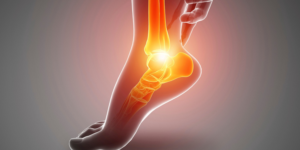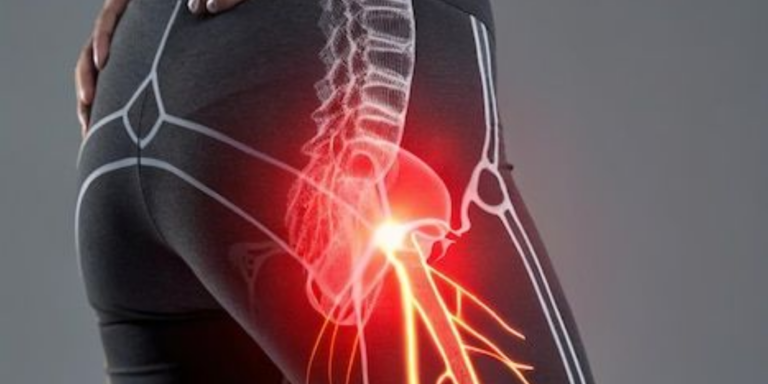
Treating Plantar Fasciitis Without Steroid Injections
Treating Plantar Fasciitis Without Steroid Injections If you’ve ever felt sharp heel pain with your first morning steps, you’re not alone. Plantar fasciitis—inflammation of the

If you’ve ever experienced sciatica, you know how debilitating it can be. The radiating pain from the lower back down through the legs makes even simple movements a challenge. Many fear surgery is the only way out, but here’s the good news: there are effective non-surgical treatments for sciatica relief that can significantly improve your quality of life—without the risks of invasive procedures.
This guide explores proven therapies, lifestyle changes, and expert-backed methods that target sciatica at its source and help you regain control of your daily activities.
Sciatica isn’t a condition in itself but a symptom caused by irritation or compression of the sciatic nerve. This nerve—the largest in the human body—runs from your lower back down each leg. When compressed, it can trigger:
Sharp or burning leg pain
Numbness or tingling
Weakness in one leg
Difficulty standing or walking for long periods
Common causes include herniated discs, spinal stenosis, degenerative disc disease, or even muscle imbalances. Understanding the root cause is essential before deciding on treatment.
Surgery is sometimes necessary, especially for severe cases involving loss of bladder/bowel control or progressive neurological deficits. But for most people, non-surgical treatments can be just as effective—with fewer risks, less downtime, and more natural recovery.
Research shows that up to 90% of sciatica cases improve with conservative care within 6–12 weeks. This makes non-surgical approaches the logical first step for most patients.
Physiotherapy remains one of the most effective ways to relieve sciatica without surgery. Through a combination of stretching, strengthening, and mobility work, physiotherapists help reduce nerve compression and restore normal function.
Common techniques include:
Core strengthening to stabilize the spine
Hamstring and piriformis stretches to reduce nerve tension
Postural correction to prevent recurring flare-ups
Nerve gliding exercises for mobility restoration
A tailored physiotherapy plan doesn’t just treat symptoms—it addresses the underlying mechanics that caused the problem in the first place.
Chiropractors focus on spinal manipulation and adjustments to relieve pressure on the sciatic nerve. For patients with herniated discs or misalignments, this can reduce inflammation and pain.
While results vary, studies suggest that chiropractic adjustments can improve mobility and decrease pain in many sciatica sufferers, especially when combined with exercise therapy.
Osteopaths use gentle manipulative techniques to release muscle tension, improve circulation, and promote healing. By targeting the musculoskeletal system, osteopathy often provides relief for patients with sciatica caused by muscular or postural imbalances.
Key benefits include:
Relaxation of tight lower back and hip muscles
Improved joint movement
Reduced stress on the lumbar spine
An ancient therapy with modern support, acupuncture stimulates specific points to relieve nerve irritation. Many patients report decreased pain intensity and improved mobility after sessions.
The mechanism? Acupuncture is believed to release endorphins, reduce inflammation, and improve blood flow—factors that all help alleviate sciatic pain.
Muscle tension often worsens sciatica symptoms. Deep tissue massage and myofascial release target tight muscles in the lower back, glutes, and hamstrings, reducing nerve compression.
Regular massage therapy can also lower stress, which indirectly helps reduce muscle guarding and chronic pain.
Simple yet effective, alternating heat and cold can work wonders:
Cold therapy reduces inflammation and numbs acute pain.
Heat therapy relaxes tight muscles and promotes blood flow.
Applying these therapies correctly (15–20 minutes at a time) can provide immediate relief while you pursue long-term treatment strategies.
For severe flare-ups, epidural steroid injections deliver anti-inflammatory medication directly around the affected nerve. While not a permanent solution, they can provide weeks or months of relief, allowing patients to focus on rehabilitation exercises.
Beyond therapy, small but powerful lifestyle adjustments can make a lasting difference:
Maintain proper posture during sitting and standing
Incorporate low-impact exercise like swimming, walking, or yoga
Lose excess weight to reduce strain on the spine
Ergonomic adjustments at work and home to protect your back
Sustaining these changes helps prevent sciatica from returning once symptoms improve.
While most cases improve with non-surgical care, it’s critical to seek medical attention if you experience:
Sudden, severe weakness in the leg
Loss of bladder or bowel control
Pain that doesn’t improve after several weeks of therapy
Progressive neurological symptoms
These may indicate a more serious condition requiring advanced medical intervention.
From physiotherapy to lifestyle modifications, non-surgical treatments for sciatica relief give patients effective options that prioritize healing over invasive procedures. Surgery should remain the last resort, reserved for cases where conservative care fails.
With the right plan and professional support, you can reduce pain, restore mobility, and take back control of your life—naturally.
Can sciatica heal on its own without treatment?
Yes, in some cases mild sciatica resolves naturally within weeks, but treatment helps speed recovery and prevent recurrence.
How long does it take for physiotherapy to work for sciatica?
Most patients notice improvement within 4–6 weeks, though recovery depends on the severity of the condition.
Is walking good for sciatica?
Yes, gentle walking can improve circulation and reduce nerve irritation, but avoid overexertion.
Can sitting make sciatica worse?
Prolonged sitting often aggravates sciatica by increasing pressure on the lumbar spine. Standing breaks and ergonomic seating help.
Are steroid injections safe for sciatica?
They are generally safe when administered occasionally, but frequent use is not recommended due to side effects.
Which is better for sciatica, heat or ice?
Both can help—ice reduces inflammation in acute stages, while heat relaxes muscles during recovery.
Top non-surgical treatments for sciatica relief empower patients with safe, effective, and long-term solutions. By combining physiotherapy, manual therapies, and lifestyle improvements, most people can manage or even eliminate sciatic pain without ever needing surgery.
If you’re struggling with sciatica, consider these alternatives first—you may be surprised how well your body can heal when given the right tools and care.

Treating Plantar Fasciitis Without Steroid Injections If you’ve ever felt sharp heel pain with your first morning steps, you’re not alone. Plantar fasciitis—inflammation of the

Best Home Exercises to Support Your Physio Progress When you walk out of a physiotherapy session, the real work isn’t over—it’s just beginning. Continuing your

The Science Behind Osteopathy: A Deep Dive for Patients Osteopathy often sparks curiosity among those searching for safe and effective pain relief methods. While its